Spain, Gibraltar and Morocco
A trip from March 24 through April 12, 2008
| Gibraltar |
|
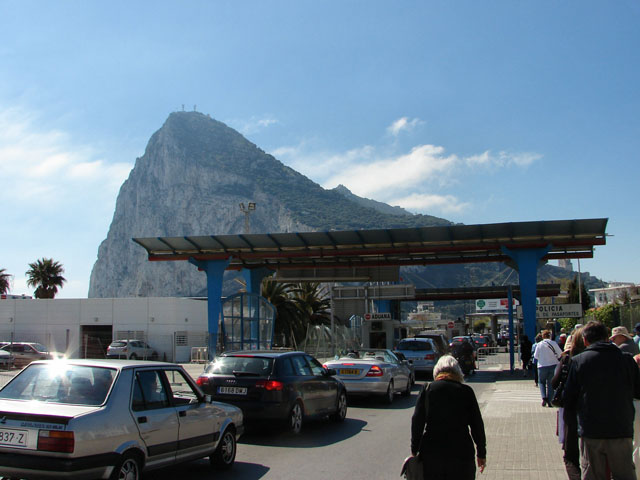 |
When
we got to the Rock of Gibraltar, the best choice was to walk across the
border from Spain into Great Britain. It was pretty casual, but
the border police were very touchy about photos. I was out of
their sight when I took this one, and they are not visible, either. This was part of Spain under the Romans, the Moors and the Catholic monarchs, but it was captured by the Dutch and British during the War of Spanish Succession, and formally ceded to the British in 1713. The most iconic view of the Rock of Gibraltar is from the sea, and we didn't approach that way. |
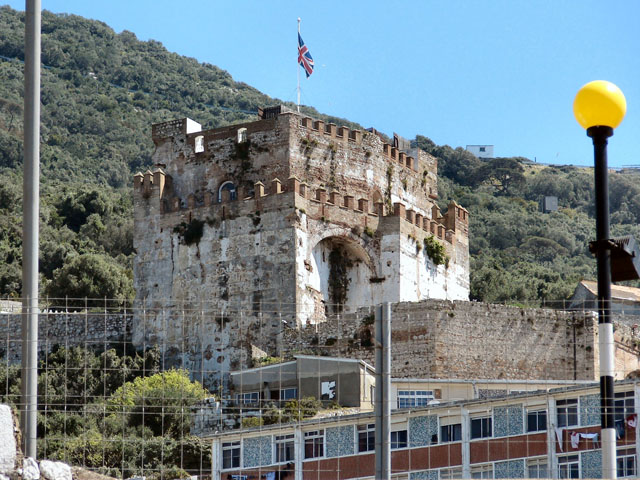 | The
Moorish Castle may date to the 8th century, but most of what we see
today was probably built in about 1068. This portion is called the
Tower of Homage, and it overlooks the land approach to the Rock of
Gibraltar. |
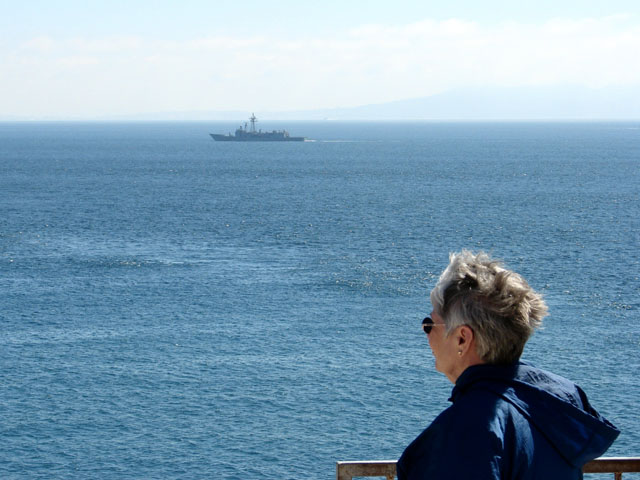 | That
shadow above Janet's head is Africa, the north coast of Morocco.
This was a hint that Morocco was going to be more mountainous than we
had expected. |
| The
Rock of Gibraltar is limestone, and limestone and water always make
caves. This is known as St. Michael's cave. It was known to
the Romans, but not by that name. While this room was prepared
for use as a hospital during WW2, it was not needed. Now it is
fitted out as a concert hall, probably with very unusual acoustics. | |
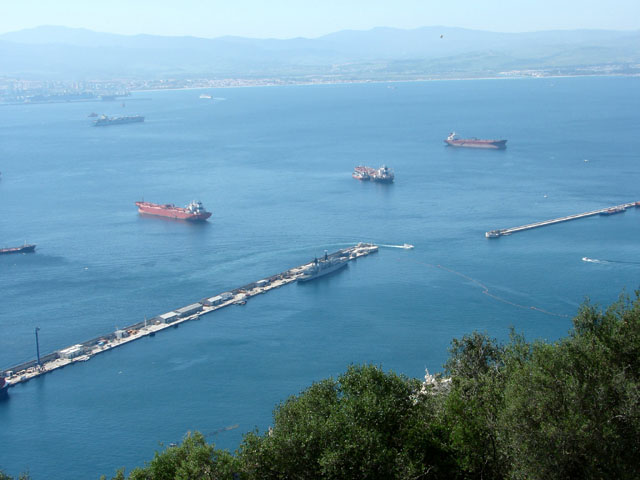 | Spain's
principal Mediterranean port, Algeciras, is across the bay from
Gibraltar. Algeciras was founded by the Moors in 713, captured by
Alphonso XI (a Christian) in 1344, then recaptured (1368) by the Moors
and subsequently destroyed. The city was refounded by Gibraltar
Spanish when they were kicked out of Gibraltar by the Dutch and English
in 1704. Franco did a lot to develop this city as a sea port. |
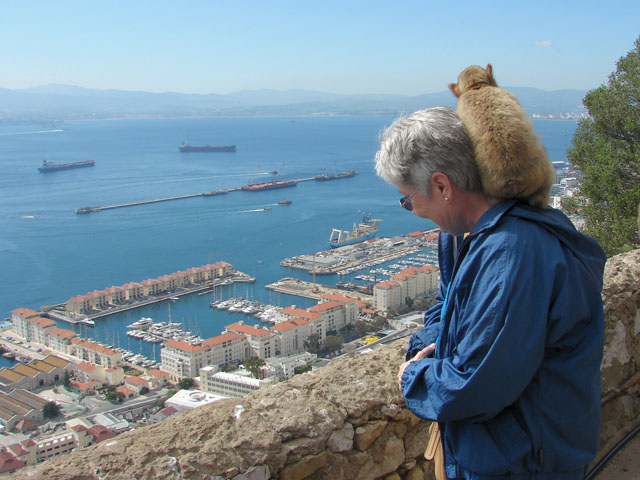 | The
Barbary apes are really macaques, monkeys without tails. About
230 live high on the Rock of Gibraltar, and they are well beyond
approachable. They are really happy to jump on your back, lap,
head, whatever. |
| Tanger | |
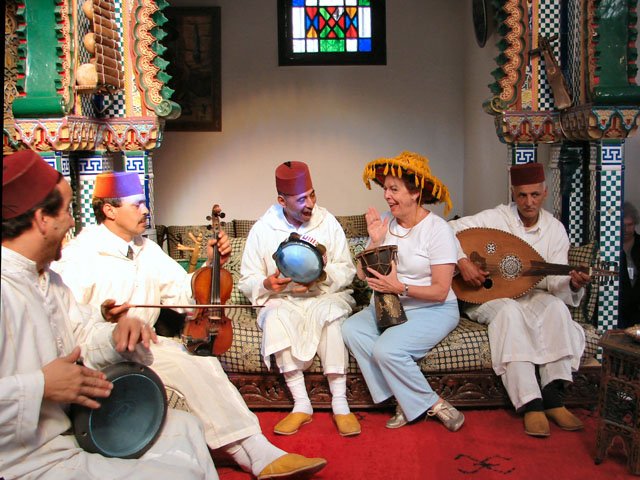 | Our
host in Morocco was the Center for Cross Cultural Learning. When
we got off the ferry, we were welcomed at a restaurant with music, tea
and Moroccan pastries. That made a good start. One member
of our party, Mickey, joined in the entertainment. |
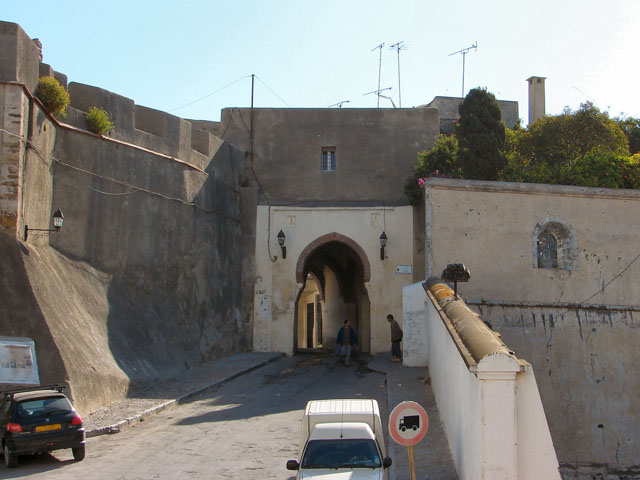 | It was here that we started to learn that each historic city has its medina, meaning a walled city. This is the entrance to the Tanger medina. |
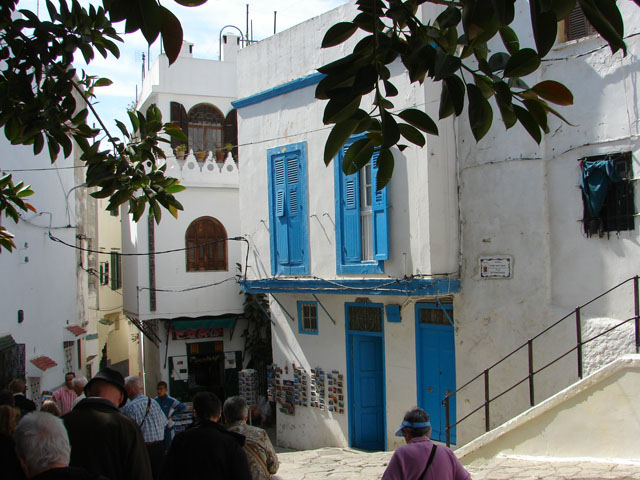 | Most
of the medinas had streets which were too narrow for automobiles, but
not necessarily for motorcycles, and certainly not to narrow for
donkeys. More about that later. |
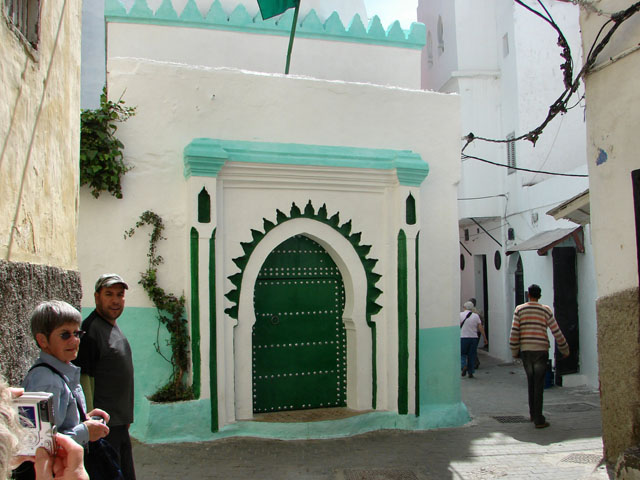 | Another
cultural surprise concerned saints. In Morocco, there is a custom
to recognize saints in both Islam and Judaism. This was the home
of Islamic saint in Tanger, and its facade is clearly much more
colorful than the normal front door. |
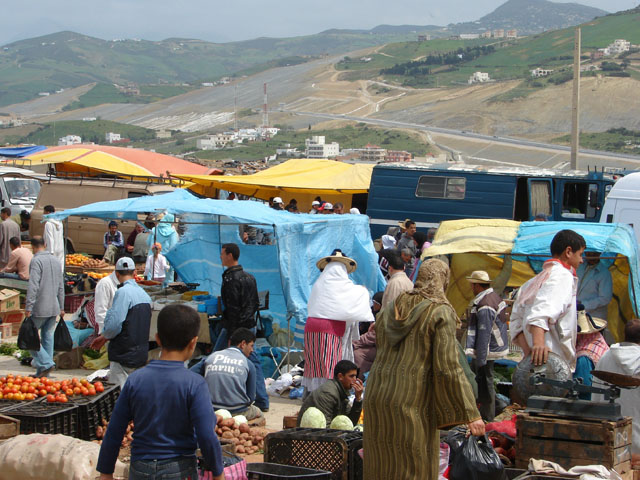 | After
leaving Tanger, we stopped at a country market. Everything was
for sale. From here, you can see tomatoes, potatoes and
cabbage. What you can't see is all the clothing, car parts and
electronics. Note the woman in the center. She is a member of a farming clan, and all the women dress in a similar way. |
| Back to Home |
Back to Seville | Forward to Chefchaouen | Back to Top |